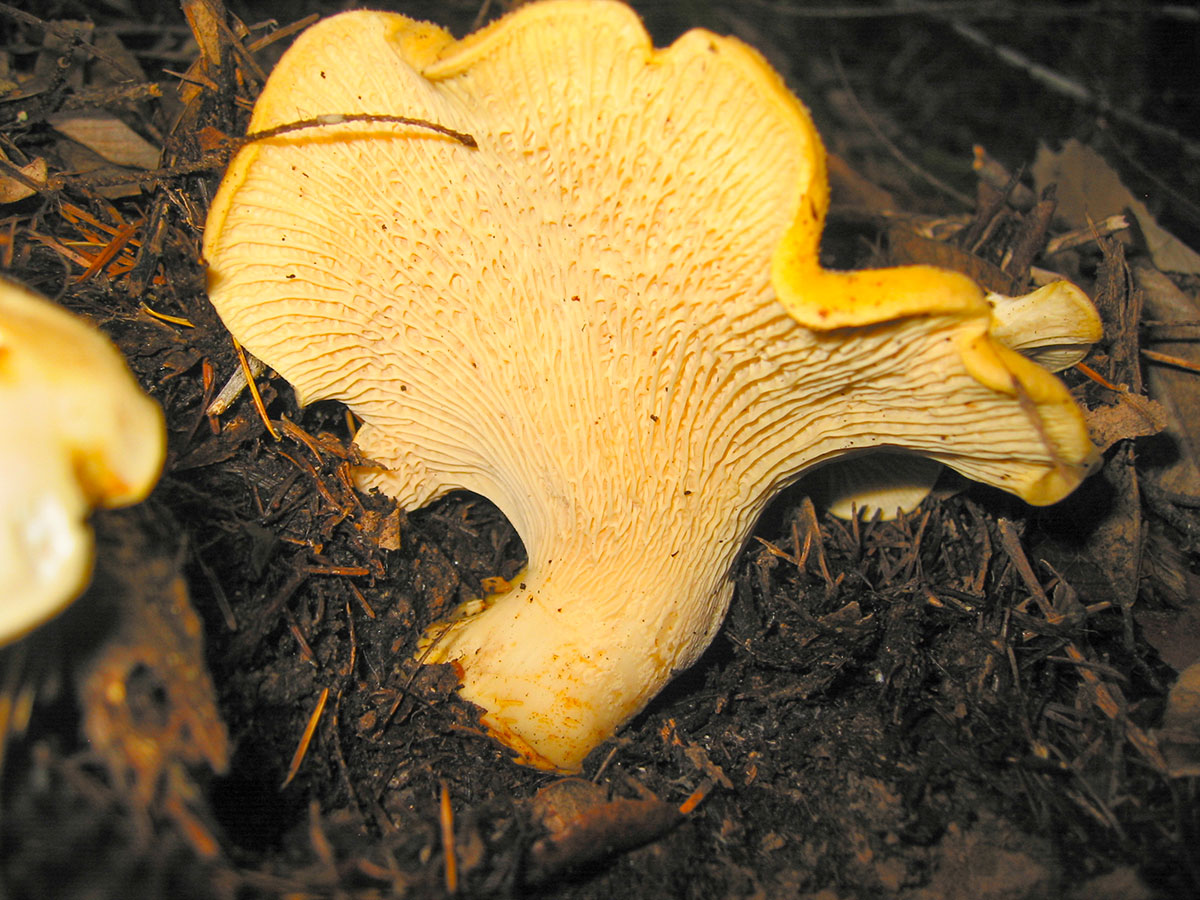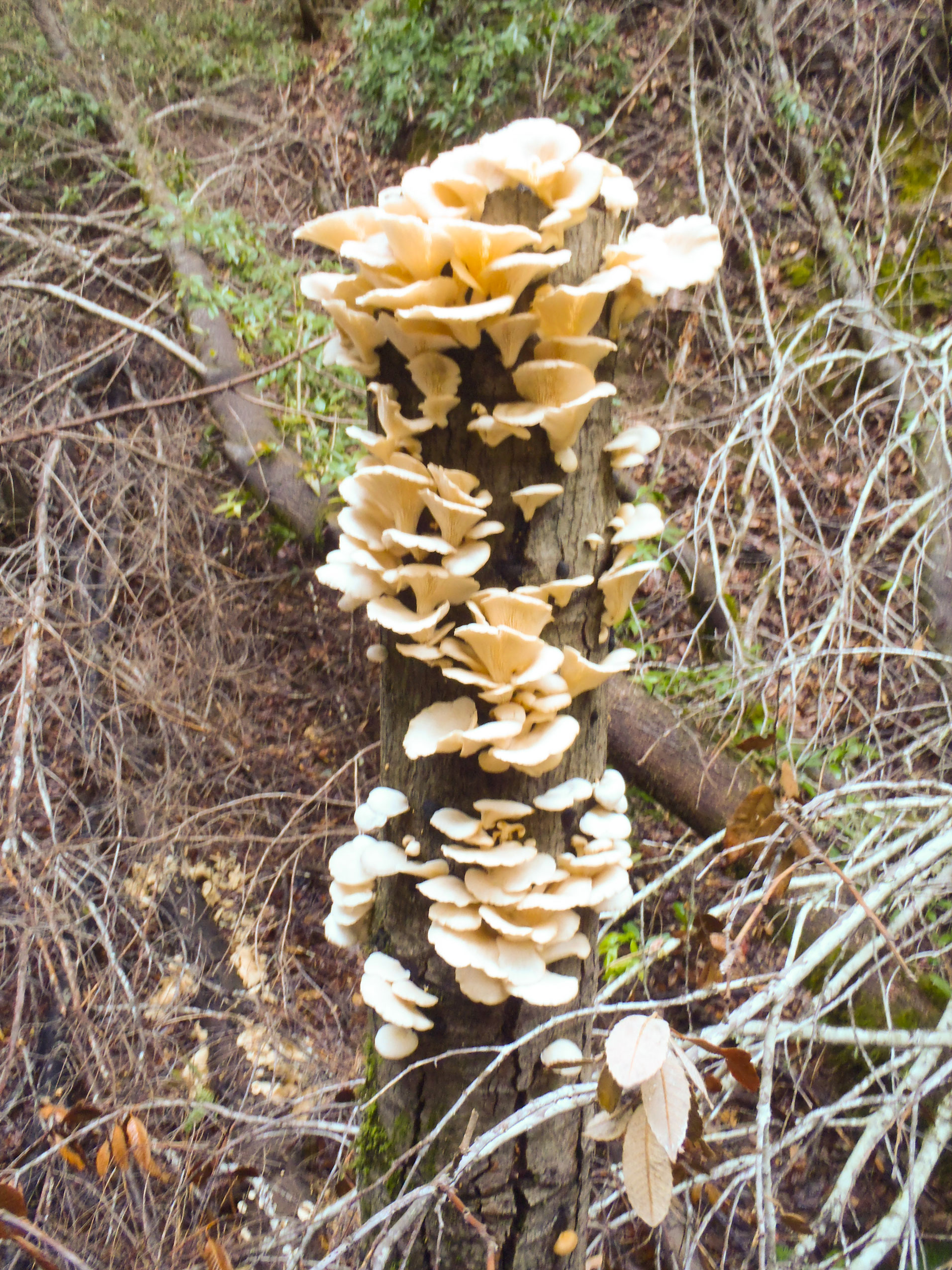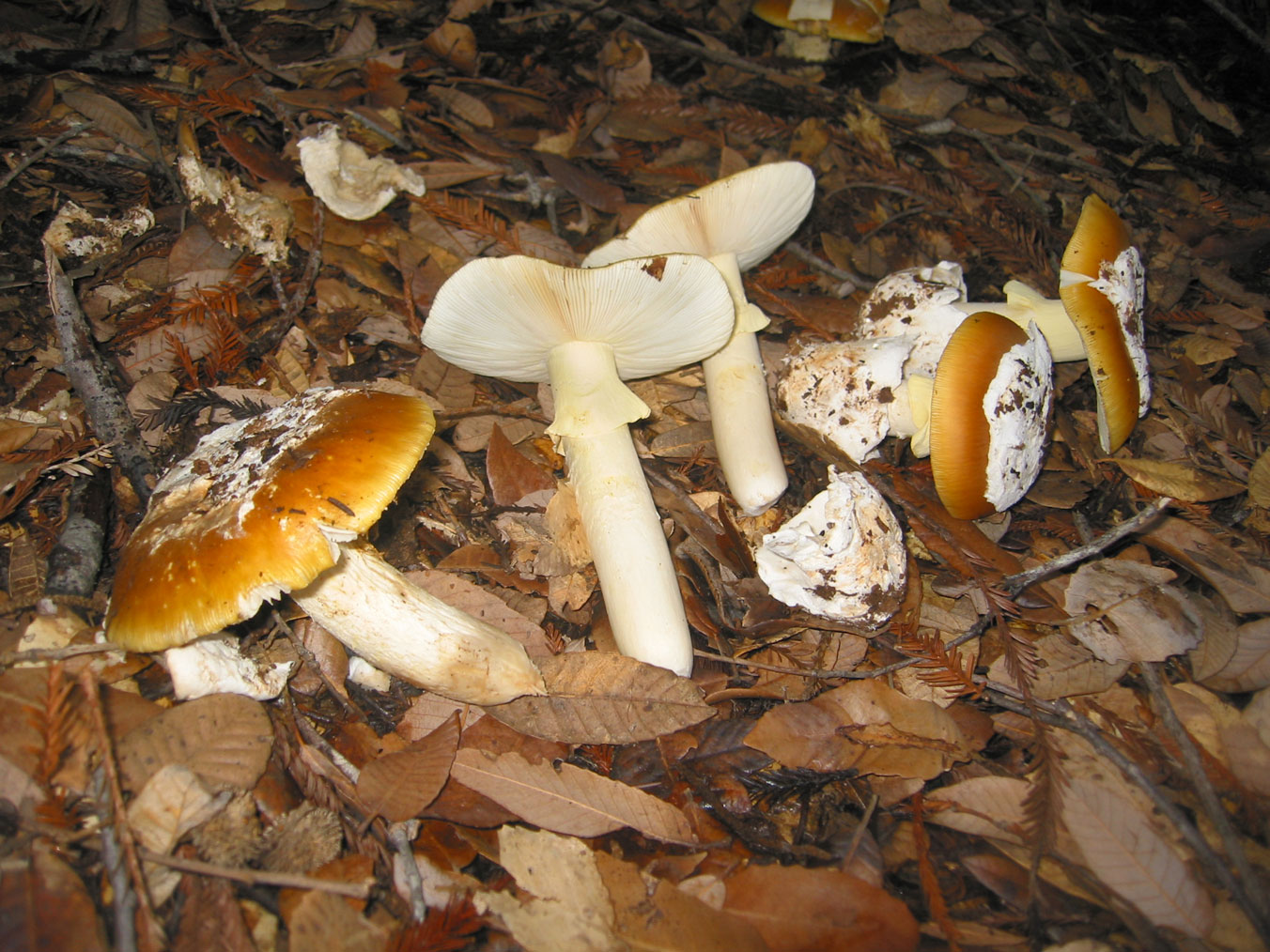5 Steps to Becoming a Better Mushroom Hunter

story & photos by Tom Shaver
Ah, mushroom season! When the sound of raindrops on rooftops brings visions of earthfruit exploding from the duff in firework-like profusion, growing before your eyes. Yeah! It’s raining! Let’s go OUTSIDE and catch the show!
Yet not every foray yields an overflowing basket, especially if you have a narrow repertoire of mushrooms that you know. After many years of mushroom hunting, I still have foraging sessions where my favorites are elusive, while abundant are a kind of mushroom that I don’t recognize.
As a self-taught mushroom hunter, I’ve become proficient at using identification keys so I can be absolutely confident serving the mushrooms I find at group dinners and selling at farmer’s markets and restaurants. I’d like to share here a few tips about getting to know a new mushroom, tips I share with people who attend workshops that I lead on my land or at events such as the Not So Simple Living Fair, as well as wine and mushroom pairings.
1) LOCATION, LOCATION, LOCATION
The first thing to consider is finding a dependable place to forage. I am lucky to live on a 200-acre property that has both redwood forest and oak woodland. When conditions are right, I can walk out my door and be gathering mushrooms almost immediately, returning in an hour or two with a full basket of mushrooms (10 to 15 pounds).
I know most people don’t have 200 acres of wild land outside their door, yet don’t let that discourage you. I’ve met experienced urban foragers who have a wide array of secret locations and end up with more harvest volume per year than I do. I was building houses in Santa Cruz when I began learning about mushrooms. I would leave a half hour early from work so that I could stop by a park on the way home for some Oysters, and maybe have a Chanterelle patch staked out that I could check at lunch.
My advice is to seek places that you can go back to regularly and for years into the future. Get to know the mushrooms that occur in that location. I have some particularly mushrogenic spots where, in an area of 100 feet diameter, a series of over 10 edible varieties will appear one after the other, with some overlapping, in what I call The March of the Season.
Because I am able to get out in the woods frequently, I have a good sense of what will be coming next as the season’s march progresses. I have indicator spots near home that I start checking because they tend to have the earliest bloom. I know there are plenty of people who only go out a few times a year to random places and come home with lots to eat, but a strong feeling for when it is time to check an area for a particular mushroom comes from years of experience.
2) NARROW YOUR SEARCH
For people who want to become familar with an area’s mushrooms, I recommend they begin with the biggest and most abundant ones they find. I took David Aurora’s pocket mushroom book, All that the Rain Promises, on my earliest forays. It has great pictures and nice bulleted lists of the distinguishing characteristics to look for in each mushroom. I still run through this collection of distinguishing features in my head when I come across many of the mushrooms I know. This book also contains alerts when the mushroom you think you’ve found could be its poisonous look-alike.
It might sound obvious, but it is critical to get to know any deadly or hazardous mushrooms in your area. I’ve made a point to know the Death Cap and Destroying Angel really well so I can recognize and avoid them easily.
3) A YEAR IN THE LIFE
I encourage people to study a mushroom for an entire season—at least, before eating it—even if you are totally sure you’ve identified it correctly. This was my process for getting to know Midnight Blue Entolomas, a dark grey, somewhat morbid-looking mushroom that I kept finding. It was helpful to see it go through its entire life cycle—from button stage, to vibrant maturity, to mush—so I could be familiar with its many faces. I went through the identification key in Mushrooms Demystified by David Aurora, starting with the spore print. Now Midnight Blue Entoloma are a staple at our dinner table when they are abundant. They are easy to clean and then store for a few days fresh or dry quickly. Either way you’ll enjoy their uniquely earthy flavor.
4) HABITAT
When we come across a patch during a group foray, I encourage people to carefully take a seat nearby and do a brief meditation to activate all five senses. Next, feel around in the duff, look at the trees, take note of the slope, and be aware of any other sensation you experience in that particular location. Take a look at the mushroom patch from above, below and each side. I find that when I have imprinted the feeling of a particular mushroom’s habitat, my senses will alert me when I come across the same conditions in an unfamiliar area, and I refine my search strategy accordingly.
I tend to cover promising areas by doing switchbacks up and down across a slope so I can scan the whole area from both above and below. Following this search pattern several times during a mushroom’s bloom period gives me a sense of the subsurface web that’s producing the fruit. Recognizing and imprinting the various micro habitats where a specific mushroom occurs is a big part of getting to know it.
5) EAT IT!
Once you’ve absolutely 100% determined that a mushroom is edible, the greatly anticipated day of first consumption is at hand. Some species you’ll want to prepare sooner rather than later. Sorting through a basket that looked pristine when I picked it but turned bug-ridden and soggy two days later helped me learn about the different shelf lives of each mushroom.
Once you’ve picked, processed and eaten hundreds of them, the angst of the first taste will be a faded memory. But when you are first tasting a mushroom you’ve picked on your own, you’ll want to just eat a little bit. Eat a bit more the next time you bring it home, then next time you might offer it to others with a warning that it is a mushroom that could be new for them. Even mushrooms that have no warning of toxic effects can produce nausea in people with sensitive digestive systems.
For some mushrooms, to know them is to smell them as they are cooking. This is particularly true for the seafoody aroma of Shrimp Russulas. For uniqueness of taste, the Matsutake is a popular choice here in Mendocino.
Recalling the adage, “We are what we eat,” brings an indelible deepness of relationship with a new mushroom. I love the slack-jawed faces and ecstatic moans when people take the first taste of a previously unknown mushroom they’ve found, identified, and prepared. From the forest floor to the frying pan, mushroom gathering is a pursuit for the patient and cautious, with wildly delicious benefits.
To arrange for a mushroom foraging session with Tom Shaver at Emerald Earth Sanctuary or on your land, please email sparkyshroom@gmail.com. For more about Tom Shaver and his approach to mushrooms, more pictures and videos of mushroom foraging, go to sparkyshroom.com.





